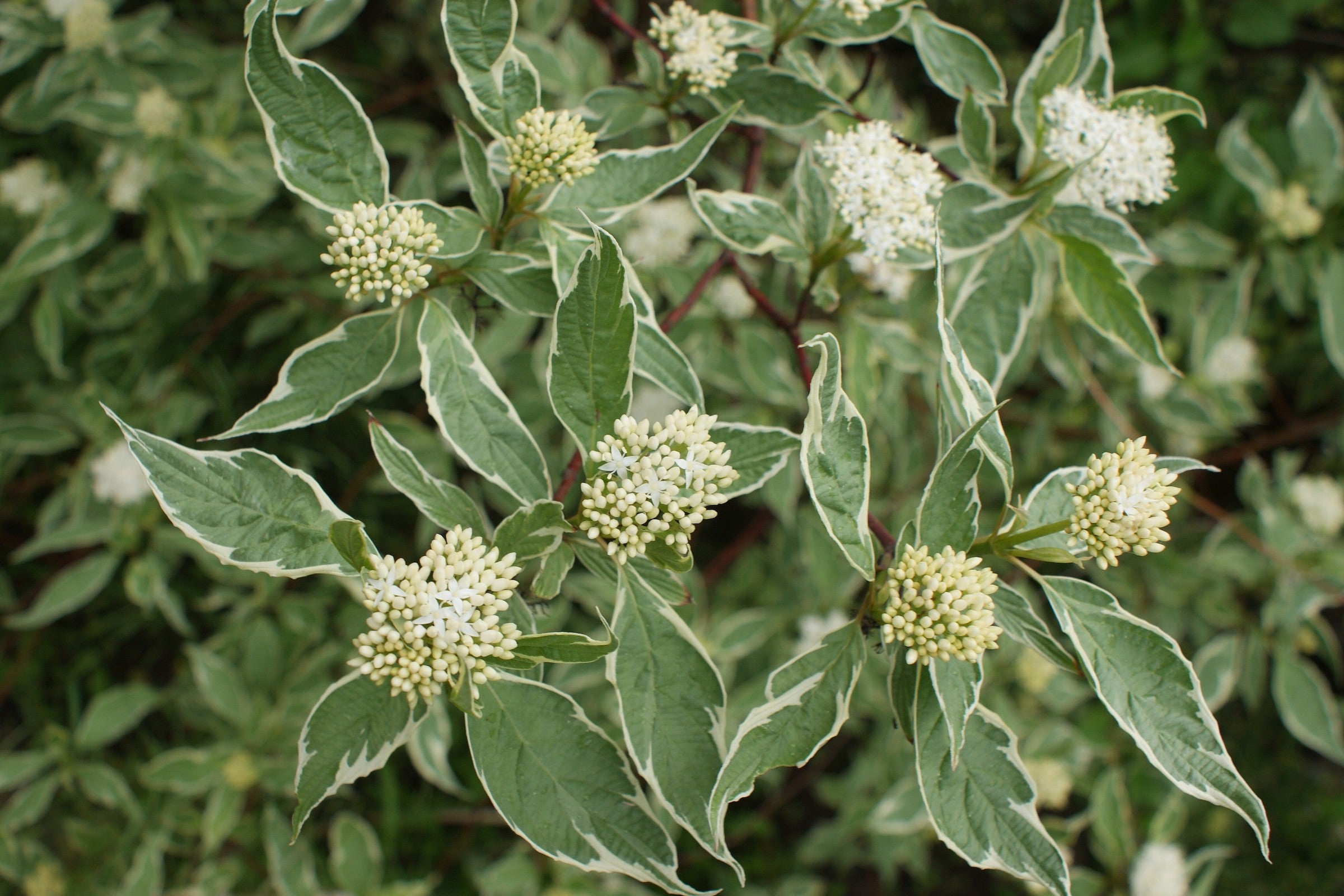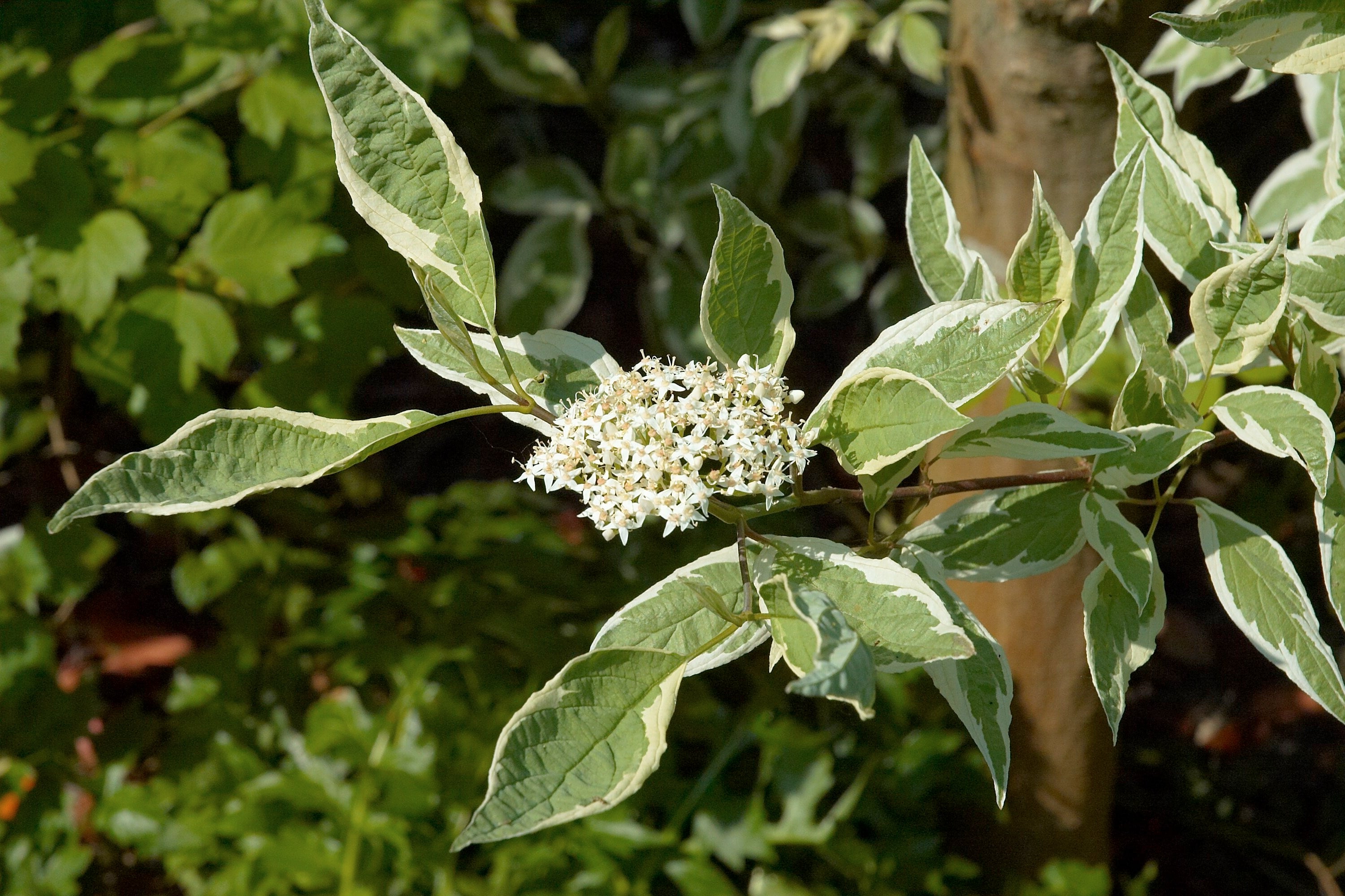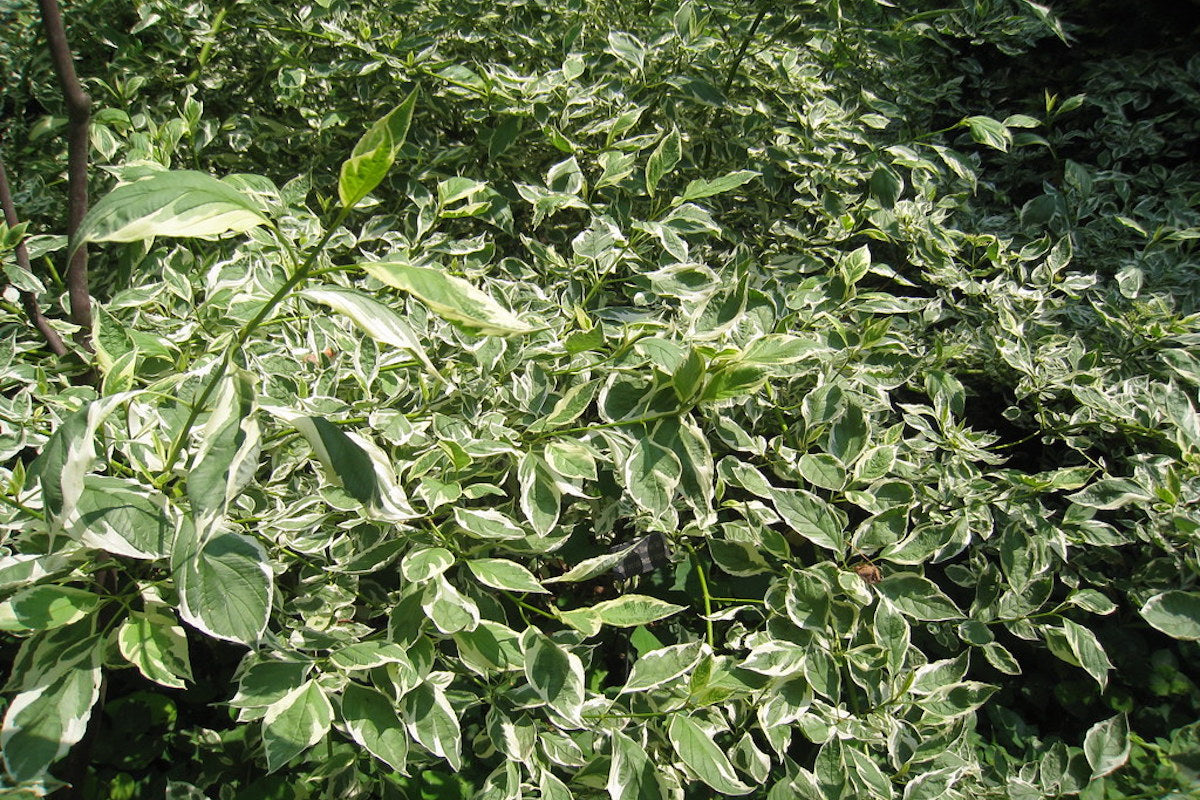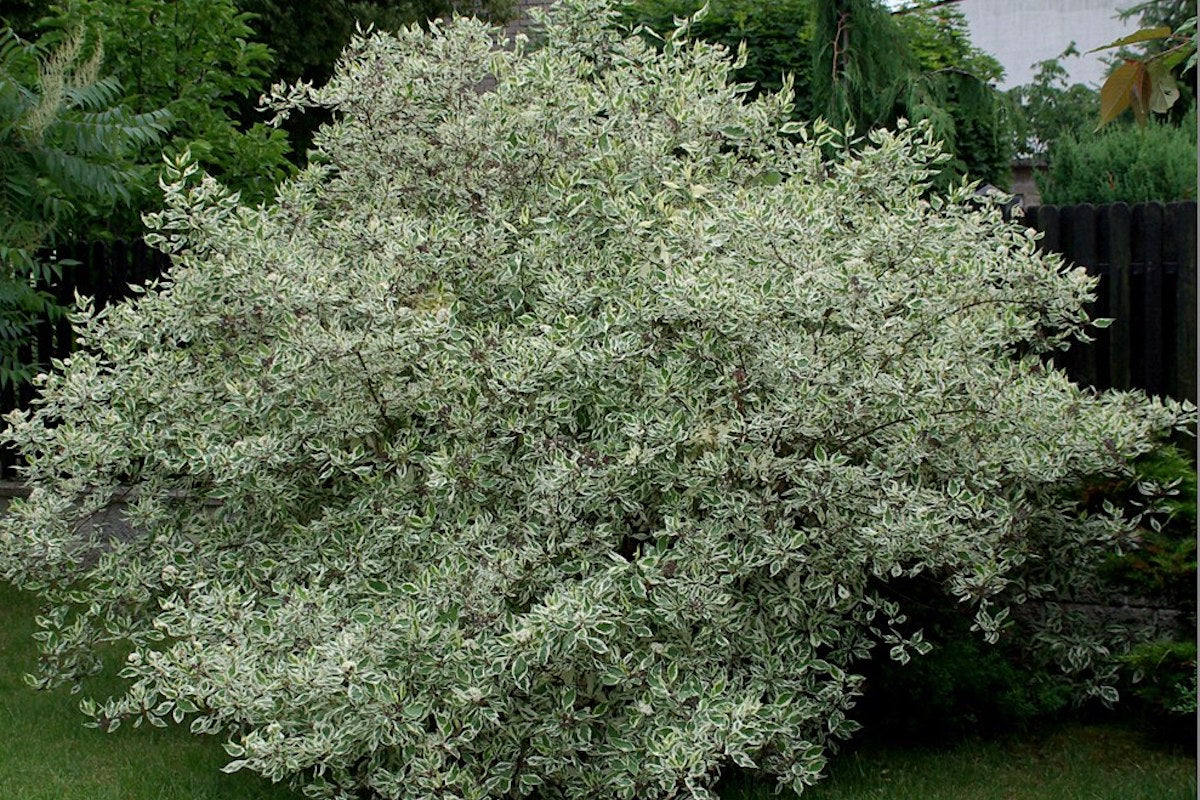Cornus alba 'Elegantissima' (v)
Approx. 0.5 litre pot
About this cultivar:
Cornus alba 'Elegantissima' (v) produces stems not as reliably red as Cornus alba 'Siberica' BUT it looks better when in leaf! Much the same as Cornus alba 'Sibirica Variegata' (v) but 'creamier' in its variegation. I can barley tell the difference but they both have the RHS Award of Garden Merit.
The latin elegantissima is the superlative form of the Latin word elegans meaning "tasteful", "choice", "fine" or "select", hence "most elegant". You decide if that is true!
- Position: Full sun, partial shade
- Soil: Almost any soil, grows well in Ballyrobert
- Flowers: May, June
- Other features: Grows well in Ballyrobert, Royal Horticultural Society Award of Garden Merit (RHS AGM)
- Hardiness: H7 - Hardy in the severest European continental climates (< -20°C), Fully hardy - grows well in Ballyrobert!
- Habit: Suckering
- Foliage: Deciduous
- Height: 150 - 240 cm (5 - 8 ft)
- Spread: 150 - 240 cm (5 - 8 ft)
- Time to full growth: 5 to 10 years
- Plant type: Shrub
- Colour: Red, green, white
-
Goes well with: Grasses such as Miscanthus and Calamagrostis. But anything really. Other Cornus also go well with this one.
About this genus:
Cornus is a genus of about 30–60 species of woody plants in the dogwood family (Cornaceae). The species vary enormously! Most are deciduous trees or shrubs, but a few species are nearly herbaceous perennial subshrubs, and a few of the woody species are evergreen. The various species of dogwood are native throughout much of the temperate North.
Cornus are well known to gardeners. The poet Virgil makes reference to a haunted copse of cornel in Book III of the Aeneid. They were also known to Geoffrey Chaucer, who calls them "whippletree" in The Canterbury Tales. The name "dog-tree" entered the English vocabulary before 1548, becoming "dogwood" by 1614. One theory is that "dogwood" was derived from the Old English dagwood, from the use of the slender stems of its very hard wood for making "dags" (daggers, skewers, and arrows). More recently in the Victorian Era, flowers or sprigs of dogwood were presented to unmarried women by male suitors to signify affection!
Apart from daggers and dating it appears Dogwood has been used throughout time and throughout the world for almost anything - from toothbrushes to tennis rackets, from fermented fruit to curing colds. Perhaps the stems could be used instead of fiber optic broadband? We'll stick to using it in our garden for now.
Cornus are almost ubiquitous in gardens, and not just here; horticulturist Donald Wyman stated, "There is a dogwood for almost every part of the U.S. except the hottest and driest areas". But with good reason - they grow almost anywhere,are beautiful in every season, and cultivars are available in almost every in height, colour and shape,
In our garden at Ballyrobert we are probably guilty of over-using Cornus (if that is possible). It is a good idea to think about where your light shines in the colder months so you can really appreciate their colourful stems. Most books will tell you to plant them with grasses such as Miscanthus and Calamagrostis - and we do that . But we also plant them beside Geranium, other Cornus and Euonymus. We had even stuck a few Galanthus (snowdrops) beneath the 'flame' cultivars. I just had an idea to put bright red/orange/yellow bulbs at the bottom of them too - watch this space!








